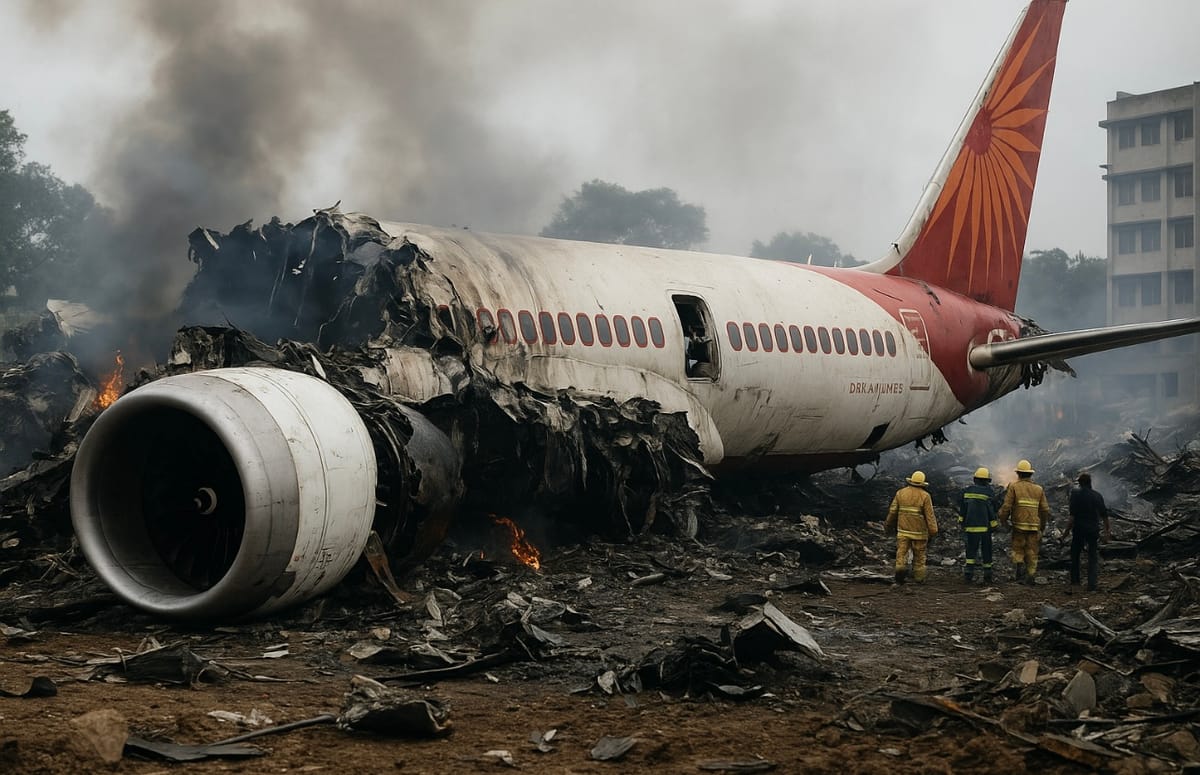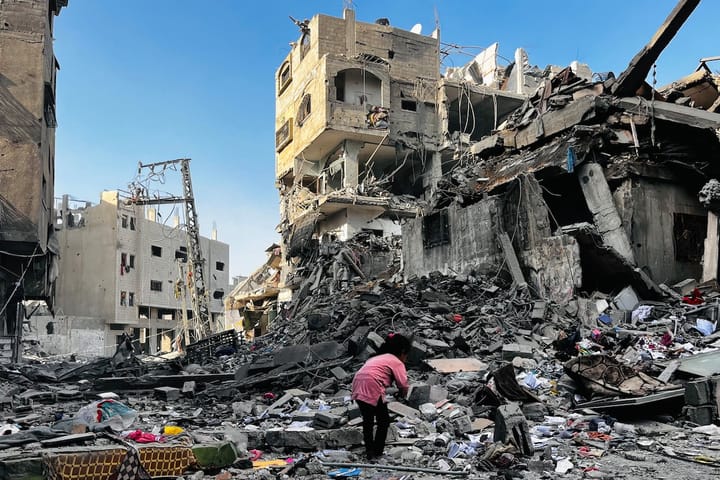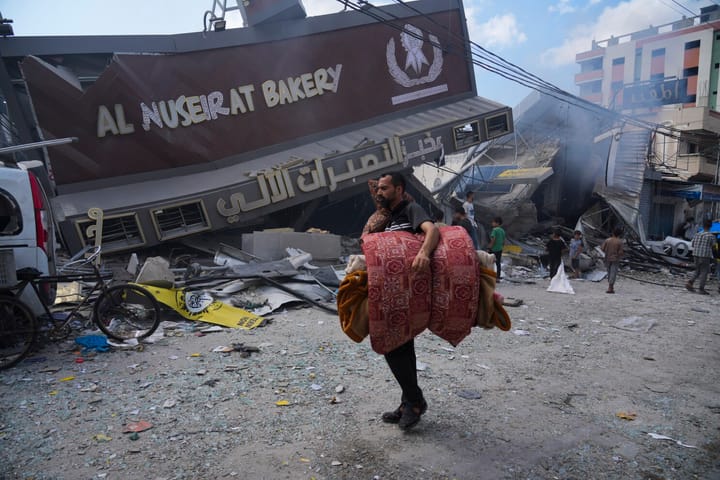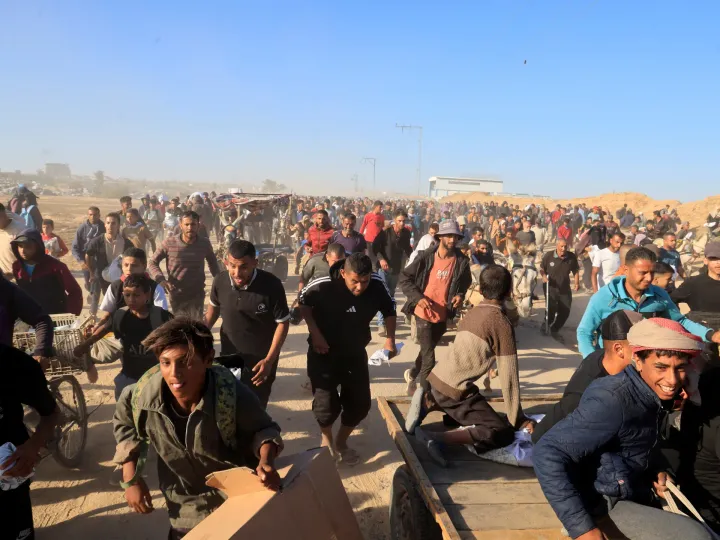Air India Boeing 787 Crash in Ahmedabad: This Year’s Deadliest Aviation Disaster
The Air India Boeing 787 crash in Ahmedabad killed 241 people, sparking a global investigation and renewed scrutiny of aviation safety.

Air India Crash: Facts, Investigation, and Global Impact
A tragic incident shook the aviation world this year when Air India Flight 171, a Boeing 787 Dreamliner, crashed shortly after takeoff from Ahmedabad International Airport. The disaster claimed nearly every passenger and crew member onboard, making it the deadliest commercial aviation tragedy in India in over two decades. This article summarizes all the verified facts, the ongoing deep investigation, and the wider impact, with a focus on clarity, detail, and SEO optimization.
Chronology of the Air India Flight 171 Crash
Air India Flight 171 departed Ahmedabad for London Gatwick in the early afternoon. The Boeing 787 Dreamliner, registration VT-ANB, was carrying 242 people, including 12 cabin crew and two pilots. Just minutes after takeoff, the aircraft suddenly lost altitude in the initial climb phase and crashed in the grounds of B.J. Medical College, Meghani Nagar, Ahmedabad. A MAYDAY distress call was heard shortly before all communication with air traffic control was lost.
Of all those onboard, only one British passenger survived, while the other 241 were confirmed dead. Dozens of casualties were also reported on the ground, including students and staff of the medical campus. The tragedy immediately drew comparisons to India’s previous worst air disasters, such as the Charkhi Dadri collision in 1996.
Evacuation Process and Black Box Recovery
Combined rescue teams from NDRF, IAF, NSG, and airport authorities were deployed instantly. The evacuation was dramatic amid burning wreckage. Not long after, the plane’s black box—comprising both the flight data recorder and cockpit voice recorder—was successfully retrieved. Analysis of this black box is now central to uncovering the exact cause of the crash.
The official investigation is being led by India’s Aircraft Accident Investigation Bureau (AAIB), in collaboration with the UK Air Accidents Investigation Branch (AAIB), the US National Transportation Safety Board (NTSB), and technical teams from Boeing and GE Aerospace. Early analysis points to a sudden loss of thrust, possible engine failure, or takeoff configuration issues.
Government and Aviation Industry Response
Prime Minister Narendra Modi visited the crash site and publicly expressed his deep condolences to the victims’ families. Tata Group, the parent company of Air India, acted quickly to provide compensation and cover all medical expenses for the survivor and the families of the deceased.
Boeing and GE Aerospace have pledged full cooperation in the investigation. The incident has also caused Boeing’s shares to drop sharply in global markets. All flights at Ahmedabad Airport were temporarily suspended, adding to the cascading effect on India’s aviation sector.
Preliminary Analysis: Safety in Focus
Aviation experts have stressed the need for a thorough audit of maintenance procedures, crew training, and the operational standards of Boeing 787 aircraft. This is the first major fatal accident involving the Dreamliner model since its launch in 2011. Investigators are also emphasizing the need for regulatory updates to strengthen commercial aviation safety.
Long-Term Impact and Recommendations
The Air India Boeing 787 disaster in Ahmedabad has brought renewed international attention to aviation safety standards, especially in India. The ongoing investigation is expected to yield concrete recommendations, from operational audits of airlines to crew training reforms and improvements to aircraft inspection systems. Several countries are now reassessing Boeing 787 Dreamliner certifications and maintenance schedules.
The Air India Flight 171 tragedy is a bitter reminder for global aviation. A thorough investigation is still underway to determine the root causes and prevent future disasters. The public now awaits transparency and policy reforms from authorities to ensure the safety of all future air travelers.





Comments ()